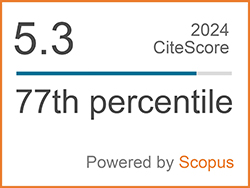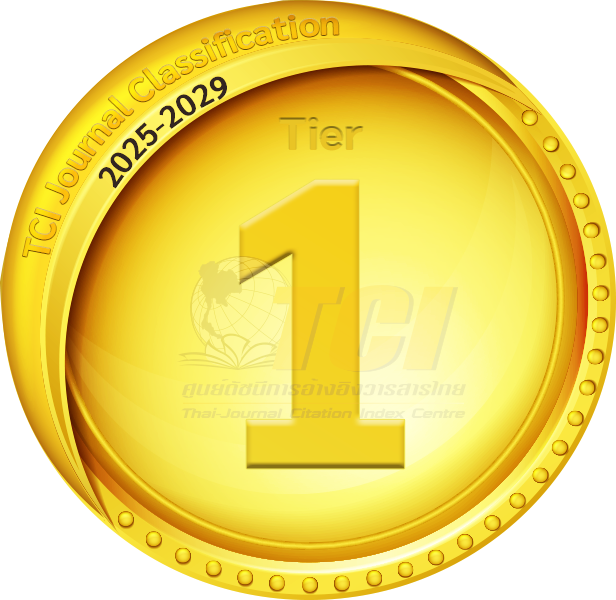Development and Application of a Novel Flow-Through Plasma-Activated Water Generator for Household Food Safety: Characterization, Safety, and Antimicrobial Efficacy
Abstract
Keywords
[1] M. Rahman et al., “Plasma-activated water for food safety and quality: A review of recent developments,” International Journal of Environmental Research and Public Health, vol. 19, no. 11, May 2022, Art. no. 6630, doi: 10.3390/ijerph19116630.
[2] N. N. Misra, T. Naladala, and K. J. Alzahrani, “Design of systems for plasma activated water (PAW) for agri-food applications,” Journal of Physics D: Applied Physics, vol. 57, no. 49, Dec. 2024, Art. no. 493003, doi: 10.1088/1361-6463/ad77de.
[3] D. Guo, H. Liu, L. Zhou, J. Xie, and C. He, “Plasma‐activated water production and its application in agriculture,” Journal of the Science of Food and Agriculture, vol. 101, no. 12, pp. 4891–4899, Sep. 2021, doi: 10.1002/jsfa.11258.
[4] Y. Yan et al., “Effect of annealing using plasma-activated water on the structure and properties of wheat flour,” Frontiers in Nutrition, vol. 9, Aug. 2022, doi: 10.3389/fnut.2022.951588.
[5] A. Mai-Prochnow et al., “Interactions of plasma-activated water with biofilms: Inactivation, dispersal effects and mechanisms of action,” npj Biofilms and Microbiomes, vol. 7, no. 1, Jan. 2021, Art. no. 11, doi: 10.1038/ s41522-020-00180-6.
[6] K. ‐D. Weltmann et al., “Atmospheric pressure plasma jet for medical therapy: Plasma parameters and risk estimation,” Contributions to Plasma Physics, vol. 49, no. 9, pp. 631–640, Nov. 2009, doi: 10.1002/ctpp.200910067.
[7] A. Lehmann, F. Pietag, and Th. Arnold, “Human health risk evaluation of a microwave-driven atmospheric plasma jet as medical device,” Clinical Plasma Medicine, vol. 7–8, pp. 16–23, Dec. 2017, doi: 10.1016/j.cpme.2017.06.001.
[8] P. Thana et al., “Plasma-activated water (PAW) decontamination of foodborne bacteria in shucked oyster meats using a compact flow-through generator,” Foods, vol. 14, no. 9, Apr. 2025, Art. no. 1502, doi: 10.3390/foods14091502.
[9] S. Ungwiwatkul, M. Jaikua, K. Prasertboonyai, P. Thana, A. Tamman, and K. Matra, “Plasma-activated municipal wastewater (PAMW): revolutionizing municipal wastewater into high-value liquid fertilizer for duckweed cultivation through air plasma treatment,” Applied Science and Engineering Progress, vol. 18, no. 3, Apr. 2025, Art. no. 7791, doi: 10.14416/j.asep.2025. 04.002.
[10] P. Thana et al., “A compact pulse-modulation cold air plasma jet for the inactivation of chronic wound bacteria: Development and characterization,” Heliyon, vol. 5, no. 9, 2019, Art. no. e0245, doi: 10.1016/j.heliyon.2019. e02455.
[11] R. Zhou et al., “Cold atmospheric plasma activated water as a prospective disinfectant: The crucial role of peroxynitrite,” Green Chemistry, vol. 20, no. 23, pp. 5276–5284, 2018, doi: 10.1039/C8GC02800A.
[12] G. Bruno, S. Wenske, J.-W. Lackmann, M. Lalk, T. von Woedtke, and K. Wende, “On the liquid chemistry of the reactive nitrogen species peroxynitrite and nitrogen dioxide generated by physical plasmas,” Biomolecules, vol. 10, no. 12, Dec. 2020, Art. no. 1687, doi: 10.3390/ biom10121687.
[13] K. S. Wong, N. S. L. Chew, M. Low, and M. K. Tan, “Plasma-activated water: Physicochemical properties, generation techniques, and applications,” Processes, vol. 11, no. 7, Jul. 2023, Art. no. 2213, doi: 10.3390/pr11072213.
[14] R. Cui, F. He, J. Miao, and J. Ouyang, “Experimental study on self-pulsing in flow-induced atmospheric pressure plasma jet,” Physics of Plasmas, vol. 24, no. 10, Oct. 2017, doi: 10.1063/1.4997262.
[15] S. He, J. Li, Y. Qiao, J. Zhao, Q. Li, and L. Dong, “Influence of equivalent resistance on the simulation of self-pulsing discharge by using a circuit model,” The European Physical Journal D, vol. 76, no. 6, Jun. 2022, Art. no. 99, doi: 10.1140/epjd/s10053-022-00415-5.
[16] M. Zhu et al., “Gliding arc discharge used for water activation: The production mechanism of aqueous NO and its role in sterilization,” Journal of Physics D: Applied Physics, vol. 56, no. 3, Jan. 2023, Art. no. 035202, doi: 10.1088/1361-6463/aca340.
[17] V. A. Shakhatov and Yu. A. Lebedev, “Radiation spectroscopy in the study of the influence of a helium-nitrogen mixture composition on parameters of DC glow discharge and microwave discharge,” High Temperature, vol. 50, no. 5, pp. 658–681, Sep. 2012, doi: 10.1134/S0018151X12050173.
[18] Z. Machala, B. Tarabová, D. Sersenová, M. Janda, and K. Hensel, “Chemical and antibacterial effects of plasma activated water: correlation with gaseous and aqueous reactive oxygen and nitrogen species, plasma sources and air flow conditions,” Journal of Physics D: Applied Physics, vol. 52, no. 3, Jan. 2019, Art. no. 034002, doi: 10.1088/1361-6463/ aae807.
[19] N. K. Kaushik et al., “Biological and medical applications of plasma-activated media, water and solutions,” Biological Chemistry, vol. 400, no. 1, pp. 39–62, Dec. 2018, doi: 10.1515/hsz-2018-0226.
[20] L. Marcinauskas, R. Uscila, and M. Aikas, “The influence of air flow rates and voltage on the plasma emission spectra and the concentrations of nitrogen oxides produced by gliding arc discharge plasma,” Applied Sciences, vol. 15, no. 1, Jan. 2025, Art. no. 446, doi: 10.3390/ app15010446.
[21] R. P. Joshi and S. M. Thagard, “Streamer-like electrical discharges in water: Part II. Environmental applications,” Plasma Chemistry and Plasma Processing, vol. 33, no. 1, pp. 17–49, Feb. 2013, doi: 10.1007/s11090-013-9436-x.
[22] S. Theepharaksapan et al., “The potential of plasma-activated water as a liquid nitrogen fertilizer for microalgae cultivation,” IEEE Transactions on Plasma Science, vol. 52, no. 7, pp. 2392–2402, Jul. 2024, doi: 10.1109/TPS.2024.3362629.
[23] S. V. Tewari, R. J. Kshirsagar, A. Roy, R. Sarathi, A. Sharma, and K. C. Mittal, “Optical emission spectroscopy study on flashover along insulator surface due to particle contamination,” Laser and Particle Beams, vol. 32, no. 4, pp. 681–689, Dec. 2014, doi: 10.1017/S026303461 4000718.
[24] K. Matra, Y. Tanakaran, V. Luang-In, and S. Theepharaksapan, “Enhancement of lettuce growth by PAW spray gliding arc plasma generator,” IEEE Transactions on Plasma Science, vol. 50, no. 6, pp. 1430–1439, Jun. 2022, doi: 10.1109/TPS.2021.3105733.
[25] K. Matra et al., “Application of electrical breakdown in liquid process on inulin structural transformations,” IEEE Access, vol. 11, pp. 114777–114789, 2023, doi: 10.1109/ACCESS. 2023.3321339.
[26] D. Trunec, Z. Navrátil, J. Tomeková, V. Mazánková, S. Ďurčányová, and A. Zahoranová, “Chemical composition of gaseous products generated by coplanar barrier discharge in air and N2/O2 mixtures,” Plasma Sources Science and Technology, vol. 31, no. 11, Nov. 2022, Art. no. 115011, doi: 10.1088/ 1361-6595/ac9c8f.
[27] A. Schmidt-Bleker, J. Winter, A. Bösel, S. Reuter, and K.-D. Weltmann, “On the plasma chemistry of a cold atmospheric argon plasma jet with shielding gas device,” Plasma Sources Science and Technology, vol. 25, no. 1, Feb. 2016, Art. no. 015005, doi: 10.1088/0963-0252/25/1/015005.
[28] A. V. Pipa and J. Ropcke, “Analysis of the mid-infrared spectrum of the exhaust gas from an atmospheric pressure plasma jet (APPJ) working with an argon–air mixture,” IEEE Transactions on Plasma Science, vol. 37, no. 6, pp. 1000–1003, Jun. 2009, doi: 10.1109/TPS. 2009.2013865.
[29] J. Tomeková, S. Kyzek, V. Medvecká, E. Gálová, and A. Zahoranová, “Influence of cold atmospheric pressure plasma on pea seeds: DNA damage of seedlings and optical diagnostics of plasma,” Plasma Chemistry and Plasma Processing, vol. 40, no. 6, pp. 1571–1584, Nov. 2020, doi: 10.1007/s11090-020-10109-8.
[30] W. Samee et al., “Electrical breakdown in liquid-phase processing on an enhancement of 7-hydroxymitragynine conversion from mitragynine in Mitragyna speciosa (Kratom),” Heliyon, vol. 10, no. 17, Sep. 2024, Art. no. e36676, doi: 10.1016/j.heliyon.2024.e36676.
[31] J. Winter et al., “Tracking plasma generated H2O2 from gas into liquid phase and revealing its dominant impact on human skin cells,” Journal of Physics D: Applied Physics, vol. 47, no. 28, Jul. 2014, Art. no. 285401, doi: 10.1088/0022-3727/47/28/285401.
[32] T. J. Johnson, R. L. Sams, S. D. Burton, and T. A. Blake, “Absolute integrated intensities of vapor-phase hydrogen peroxide (H2O2) in the mid-infrared at atmospheric pressure,” Analytical and Bioanalytical Chemistry, vol. 395, no. 2, pp. 377–386, Sep. 2009, doi: 10.1007/s00216-009-2805-x.
[33] A. A. Abdelaziz, T. Ishijima, N. Osawa, and T. Seto, “Quantitative analysis of ozone and nitrogen oxides produced by a low power miniaturized surface dielectric barrier discharge: Effect of oxygen content and humidity level,” Plasma Chemistry and Plasma Processing, vol. 39, no. 1, pp. 165–185, Jan. 2019, doi: 10.1007/s11090-018-9942-y.
[34] M. Jaikua et al., “Development and characterization of pilot-scale remote cold plasma treatment (RCPT) system for fruit surface decontamination,” Plasma Chemistry and Plasma Processing, Jun. 2025, doi: 10.1007/s11090-025-10577-w.
[35] M. Laroussi, “Cold plasma in medicine and healthcare: The new frontier in low temperature plasma applications,” Frontiers in Physics, vol. 8, Mar. 2020, doi: 10.3389/fphy.2020.00074.
[36] P. J. Bruggeman et al., “Plasma–liquid interactions: A review and roadmap,” Plasma Sources Science and Technology, vol. 25, no. 5, Sep. 2016, Art. no. 053002, doi: 10.1088/0963-0252/25/5/053002.
[37] J. Y. Park and Y. N. Lee, “Solubility and decomposition kinetics of nitrous acid in aqueous solution,” The Journal of Physical Chemistry, vol. 92, no. 22, pp. 6294–6302, Nov. 1988, doi: 10.1021/j100333a025.
[38] F. Tochikubo, Y. Shimokawa, N. Shirai, and S. Uchida, “Chemical reactions in liquid induced by atmospheric-pressure dc glow discharge in contact with liquid,” Japanese Journal of Applied Physics, vol. 53, no. 12, Dec. 2014, Art. no. 126201, doi: 10.7567/JJAP.53.126201.
[39] B. Tarabová et al., “Fluorescence measurements of peroxynitrite/peroxynitrous acid in cold air plasma treated aqueous solutions,” Physical Chemistry Chemical Physics, vol. 21, no. 17, pp. 8883–8896, 2019, doi: 10.1039/C9CP00871C.
[40] K. Panngom et al., “Non-thermal plasma treatment diminishes fungal viability and up-regulates resistance genes in a plant host,” PLoS ONE, vol. 9, no. 6, Jun. 2014, Art. no. e99300, doi: 10.1371/journal.pone.0099300.
[41] Y. Xu et al., “Plasma-activated water: Candidate hand disinfectant for SARS-CoV-2 transmission disruption,” Heliyon, vol. 10, no. 15, Aug. 2024, Art. no. e34337, doi: 10.1016/ j.heliyon.2024.e34337.
[42] A. Nikolaou et al., “The ratio of reactive oxygen and nitrogen species determines the type of cell death that bacteria undergo,” Microbiological Research, vol. 292, Mar. 2025, Art. no. 127986, doi: 10.1016/j.micres.2024.127986.
[43] N. Vichiansan et al., “Effect of plasma-activated water (PAW) on the shelf lives of whiteleg shrimp (Litopenaeus vannamei) and splendid squid (Loligo formosana),” Food and Bioprocess Technology, vol. 17, no. 9, pp. 2644–2660, Sep. 2024, doi: 10.1007/s11947-023-03282-z.
[44] E. Tsoukou, M. Delit, L. Treint, P. Bourke, and D. Boehm, “Distinct chemistries define the diverse biological effects of plasma activated water generated with spark and glow plasma discharges,” Applied Sciences, vol. 11, no. 3, Jan. 2021, Art. no. 1178, doi: 10.3390/app 11031178.
[45] R. Zhou et al., “Plasma-activated water: generation, origin of reactive species and biological applications,” Journal of Physics D: Applied Physics, vol. 53, no. 30, Jul. 2020, Art. no. 303001, doi: 10.1088/1361-6463/ ab81cf.
[46] W. F. L. M. Hoeben, P. P. van Ooij, D. C. Schram, T. Huiskamp, A. J. M. Pemen, and P. Lukeš, “On the possibilities of straightforward characterization of plasma activated water,” Plasma Chemistry and Plasma Processing, vol. 39, no. 3, pp. 597–626, May 2019, doi: 10.1007/s11090-019-09976-7.
[47] K. Oehmigen, M. Hähnel, R. Brandenburg, Ch. Wilke, K. ‐D. Weltmann, and Th. von Woedtke, “The role of acidification for antimicrobial activity of atmospheric pressure plasma in liquids,” Plasma Processes and Polymers, vol. 7, no. 3–4, pp. 250–257, Mar. 2010, doi: 10.1002/ppap.200900077.
[48] J. Qian, H. Zhuang, M. M. Nasiru, U. Muhammad, J. Zhang, and W. Yan, “Action of plasma-activated lactic acid on the inactivation of inoculated Salmonella enteritidis and quality of beef,” Innovative Food Science & Emerging Technologies, vol. 57, Oct. 2019, Art. no. 102196, doi: 10.1016/j.ifset.2019.102196.
[49] J. Qian, C. Wang, H. Zhuang, M. M. Nasiru, J. Zhang, and W. Yan, “Evaluation of meat-quality and myofibrillar protein of chicken drumsticks treated with plasma-activated lactic acid as a novel sanitizer,” LWT, vol. 138, Mar. 2021, Art. no. 110642, doi: 10.1016/j.lwt.2020. 110642.
[50] Y.-M. Zhao, M. Oliveira, C. M. Burgess, J. Cropotova, T. Rustad, D.-W. Sun, and B. K. Tiwari, “Combined effects of ultrasound, plasma-activated water, and peracetic acid on decontamination of mackerel fillets,” LWT, vol. 150, Oct. 2021, Art. no. 111957, doi: 10.1016/ j.lwt.2021.111957.
[51] X. Liu, M. Zhang, X. Meng, Y. Bai, and X. Dong, “Effect of plasma-activated water on Shewanella putrefaciens population growth and quality of yellow river carp (Cyprinus carpio) fillets,” Journal of Food Protection, vol. 84, no. 10, pp. 1722–1728, Oct. 2021, doi: 10.4315/JFP -21-031.
[52] K. I. Sallam et al, “Microbial decontamination of beef carcass surfaces by lactic acid, acetic acid, and trisodium phosphate sprays,” BioMed Research International, vol. 2020, no. 1, Jan. 2020, doi: 10.1155/2020/2324358.
[53] K. M. Killinger, A. Kannan, A. I. Bary, and C. G. Cogger, “Validation of a 2 percent lactic acid antimicrobial rinse for mobile poultry slaughter operations,” Journal of Food Protection, vol. 73, no. 11, pp. 2079–2083, Nov. 2010, doi: 10.4315/0362-028X-73.11.2079.
[54] M. Sohaib, F. M. Anjum, M. S. Arshad, and U. U. Rahman, “Postharvest intervention technologies for safety enhancement of meat and meat based products; A critical review,” Journal of Food Science and Technology, vol. 53, no. 1, pp. 19–30, Jan. 2016, doi: 10.1007/ s13197-015-1985-y.
[55] M. Fernández, A. Rodríguez, M. Fulco, T. Soteras, M. Mozgovoj, and M. Cap, “Effects of lactic, malic and fumaric acids on Salmonella spp. counts and on chicken meat quality and sensory characteristics,” Journal of Food Science and Technology, vol. 58, no. 10, pp. 3817–3824, Oct. 2021, doi: 10.1007/s13197-020-04842-3.
[56] D. H. Lee, K.-T. Kim, H. S. Kang, Y.-H. Song, and J. E. Park, “Plasma-assisted combustion technology for NOxreduction in industrial burners,” Environmental Science & Technology, vol. 47, no. 19, pp. 10964–10970, Oct. 2013, doi: 10.1021/es401513t.
[57] S. N. Nuñal, K. Jane, M. Monaya, C. Rose, T. Mueda, and S. M. Santander-De Leon, “Microbiological quality of oysters and mussels along its market supply chain,” Journal of Food Protection, vol. 86, no. 3, Mar. 2023, Art. no. 100063, doi: 10.1016/ j.jfp.2023.100063.
[58] J. Paiva, S. Torres, O. Viana, R. Maggioni, F. Teles, F. R. Queiroga, and P. da Silva, “Oyster (Crassostrea gasar) gastrointestinal tract microbiota and immunological responses after antibiotic administration,” Latin American Journal of Aquatic Research, vol. 47, no. 1, pp. 78–88, Mar. 2019, doi: 10.3856/vol47-issue1-fulltext-9.
[59] A. E. Cabello, R. T. Espejo, and J. Romero, “Tracing Vibrio parahaemolyticus in oysters (Tiostrea chilensis) using a green fluorescent protein tag,” Journal of Experimental Marine Biology and Ecology, vol. 327, no. 2, pp. 157–166, Dec. 2005, doi: 10.1016/j.jembe.2005. 06.009.
[60] Y. Zhang et al., “Nitrite and nitrate in meat processing: Functions and alternatives,” Current Research in Food Science, vol. 6, 2023, Art. no. 100470, doi: 10.1016/j.crfs. 2023.100470.DOI: 10.14416/j.asep.2025.09.003
Refbacks
- There are currently no refbacks.
 Applied Science and Engineering Progress
Applied Science and Engineering Progress







